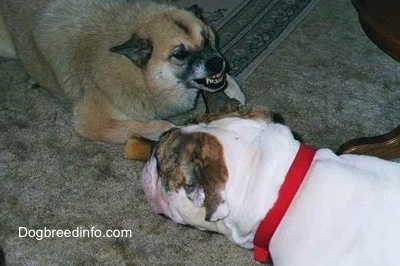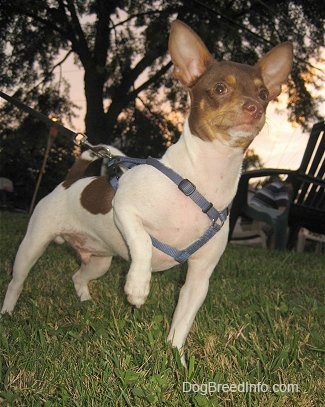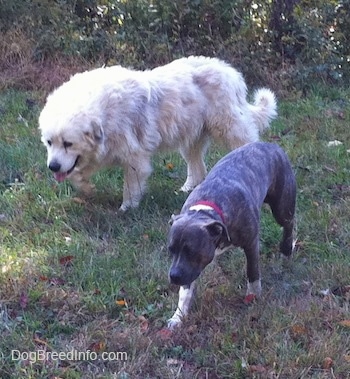
List of dominant behaviors which can occur in dogs (this list is not yet complete)
Besides the obvious guarding, growling and biting, many dogs display a variety of dominant behaviors that commonly go unrecognized by their humans. Dogs very rarely display the highest level of dominance overnight. There are usually signs leading up to it over the years and dominant alpha dogs do not always growl and bite. If the owners are giving the dog what it wants, sometimes there is no reason for the dog to growl or bite unless it is challenged. Dogs understand that they exist in a human world. After all, who gives them food and opens the door for them to go potty? When humans perform these tasks on demand from the dog, though, why wouldn't the dog think it’s the leader? It is easy for dogs to get the impression they are alpha in their pack. Since many canine alpha behaviors are not acceptable in human society, for example, biting, it is important for humans to retain their leadership over their dogs.
Below are some common behaviors dogs display when they believe they are above humans. Keep in mind that a dog does not have to display all of these behaviors to be in a dominant frame of mind. Sometimes an alpha dog will only display a few of the behaviors at random times, depending on what the dog decides it feels like doing at any given moment. Smarter dogs tend to challenge the pack order more than dogs of average or below-average intelligence.

Just looking at a dog and the way he carries himself can tell you what frame of mind the dog is in. For example, a dominant dog will walk high and proud, puffing himself out as much as he can. He carries himself with what looks like dignity to the untrained human eye. The body is carried stiffly, tail is up and rigid, ears are on alert.

Submissive dogs, on the other hand, carry themselves in quite the opposite way. They hold their heads low, shoulders down, tails down, slinking themselves smaller. To the untrained human eye it looks like a submissive dog is a sad dog. Not so, the posture of these submissive dogs is telling all around them that they do not wish to challenge anyone. They come in peace. Dogs are “fight” animals, which means their natural defense mechanism is to fight when they are threatened. That is why they make it so obvious when they do not wish to fight or when they do.
Since dominant dogs look so proud and, we all have to admit, cute, if you don't know what the dog is really saying, and submissive dogs kind of look sad since they hold their heads low and slink themselves down, it's no wonder so many people have dominant dogs. When their dog acts submissive they mistake that for a sad dog. When their dog acts dominant they mistake it for a happy, proud dog. Dominance tends to get rewarded.

This yellow Labrador was growling and barking ferociously at a lady. The dog at one point trapped the lady in the corner of the garage until the owners were able to come and call her off. Most people would mistake this behavior as dominant-aggressive, but if you look at the dog's body language you will notice it is different than the Chihuahua shown above. The dog's tail is down and slightly tucked. The ears are back rather than forward. Notice how the dog is leaning slightly backward, rather than forward. This Labrador is insecure and fearful and she has learned to deal with these feelings by acting out aggressively. This dog may still bite a human out of fear, but the reasons for her behavior are not the same as a dog who is acting aggressive out of dominance.

Eight-year-old Emiliano "mastering the walk" with Darley the Beagle mix
Dogs have an instinct to migrate and an instinct to be led by their leader. Teaching a dog to heel on a lead is the single most effective way to communicate who is the leader of your pack. Dogs are happiest when they can be secure about the pack order. Humans are happiest when their dogs are relaxed and respectful of their surroundings. When dogs are allowed to walk in front of the humans while on a lead, it is communicating to them that they are above the human in the order. When the pack order is not made clear it causes dogs a lot of stress and anxiety. Have you mastered the walk with your dog?